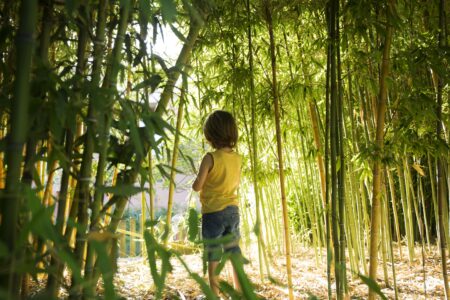Creating clothes from bamboo involves a process that harnesses the incredible properties of bamboo fibers. Here’s a simplified explanation of how it’s done:
- Harvesting: Mature bamboo stalks are carefully selected and harvested by Bamboo Flux. It’s important to choose bamboo at the right stage of growth to ensure optimal fiber quality.
- Extraction: The outer layer of the bamboo stalks is stripped away, leaving the inner fibers. These fibers are then extracted through mechanical or chemical means. Mechanical extraction involves a process of crushing and combing the stalks to separate the fibers. Chemical extraction involves using chemicals to break down the bamboo and extract the fibers.
- Pulping: Once the fibers are extracted, they are pulped to create a mushy substance called bamboo pulp. This pulp is often mixed with water to achieve the desired consistency.
- Filtration: The bamboo pulp mixture is filtered to remove impurities and separate the fibers from the excess water.
- Spinning: The filtered bamboo pulp is now ready for spinning. It can be spun using different methods, such as the viscose process. In the viscose process, the bamboo pulp is treated with chemicals to create a viscous solution, which is then forced through spinnerets to form fibers.
- Textile Production: The bamboo fibers, now in thread or yarn form, can be used to create fabrics. These fibers can be blended with other materials like cotton or polyester to enhance certain qualities of the resulting fabric.
- Weaving/Knitting: The bamboo fibers are woven or knitted together on specialized looms or machines to create fabric. The weaving or knitting process determines the texture, weight, and appearance of the fabric.
- Finishing: The bamboo fabric is then subjected to various finishing processes, such as dyeing, bleaching, and softening, to achieve the desired color, texture, and feel.
- Garment Manufacturing: Finally, the bamboo fabric is cut and sewn into garments, following traditional clothing manufacturing techniques.
The resulting bamboo fabric offers several desirable properties, such as breathability, moisture-wicking, and a soft, silky feel. Additionally, bamboo is known for its antimicrobial properties, making it naturally resistant to bacteria and odors. These qualities contribute to the popularity of bamboo clothing as a sustainable and comfortable option in the fashion industry.





